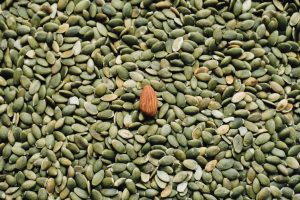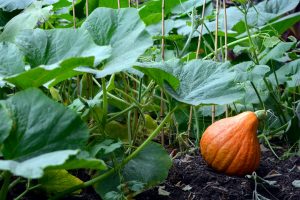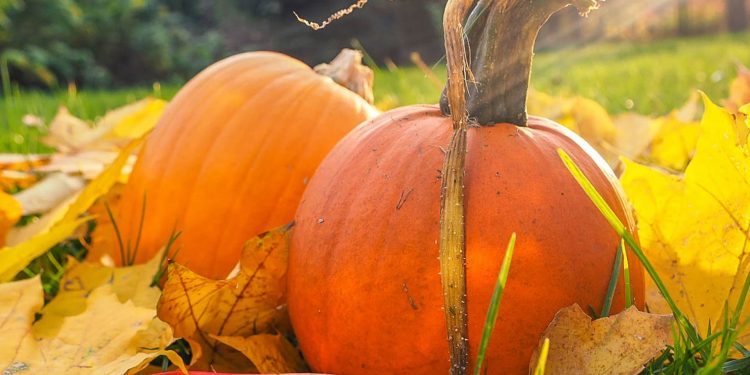Pumpkins are widely associated with Halloween and Thanksgiving. Its vibrant orange body is a statement symbol for the autumn season. Growing a pumpkin plant is said to be a rewarding experience that allows you to enjoy the evolution of the seed to this iconic fruit. Pumpkins take 90-120 days to mature after seeds are planted. Pumpkins are heavy feeders so they should be provided with a lot of nourishment and properly enriched soil, that being said they are fairly easy to maintain.
How To Grow A Pumpkin Plant
Let us learn all the general steps taken for growing a pumpkin plant.
1. Pick the right seeds.
To pick the right seeds, there are a couple of factors that you will have to take into consideration.
- Pumpkins come in varieties that differ in size, color, taste and texture, so pick one that best suits your intent and use.
- Make sure that the pumpkin variety you choose is suitable for your climate. Not all the varieties require the same climatic conditions to grow.
- Pumpkin seeds are typically planted in late spring when the soil temperature reaches around 65°F to 70°F.
- Choose high quality seeds for a promising successful harvest. Make sure the seeds are from a reputable supplier or reliable sources.
2. Right Soil
Pumpkins grow extremely well in well-drained, fertile soil. They are heavy feeders in general so they must be properly nourished with mineral enriched soil. Some key factors to take into consideration are:
- Pumpkins need at least 6-8 hours of direct sunlight on a daily basis. It’s best to pick a sunny spot that would provide the plant with adequate sunlight throughout the day.
- Test the soil for its mineral and nutrient levels. They best grow in a slightly acidic to neutral soil.
- To improve soil fertility, add organic matter like compost or well-rotted manure, this will help increase the mineral and nutrient levels in the soil.
3. Planting Process
Once you have your seeds picked, sorted the location and prepared the soil, you are now ready to plant them. The seeds should be planted 1 inch deep with 2-4 seeds per mound.
These mounds should be spaced 2-3 feet apart in the row with rows 4-6 feet apart from each other. The soil has be kept moist all the time but make sure it's not waterlogged. Best way to maintain the moisture content in the soil is through drip irrigation.
Also Read: Top 10 High Vibrational Foods: A Comprehensive Guide
4. Maintaining The Pumpkin Plants

While Pumpkin plants are an easy maintenance they require ongoing care. Here are some of the measures taken:
- Start with a balanced, all-purpose fertilizer and adjust the measures as based on soil testing.
- De-weeding the area on a regular basis is necessary as it helps keep the plant safe and also reduces the chances of developing any infection or risk of disease.
- It is a good choice to grow some nectar-rich flowers nearby the pumpkin plants to help attract pollinators as most pumpkin varieties require pollinators, which are usually bees, for successful fruit production.
5. Stages Of Growth
Let’s look at the stages of growth in a pumpkin plant to make sure that proper care is giving on each stage.
- Germination: The stage here the seed sprouts and develops into a seedling, usually within 5-10 days after planting. Make sure to keep the soil moist and provid proper sunlight.
- Vining Stage: Post the seedling stage, the vines begin to grow and spread, covering the entire area. Be mindful about maintaining proper distance between each plant.
- Flowering: Pumpkin plants produce male and female flowers. Pollinators like bees transfer pollen from the male to the female flowers for fruit development, so its important to plant some nectar-rich flowers as an attraction.
- Fruit: Once the pollination process is done, the female flowers start producing small pumpkins. Pumpkins grow rapidly so make sure to provide them with proper nourishments and care during this period
Also Read: Special Nutritional Needs for Seniors: Tips for Caregivers
6. Harvesting
It’s finally the pay day, the day you have been waiting for since you started the journey. Here's how to determine if they're ready for harvest
- Most pumpkins are ready to harvest when they reach their full color, depending on variety-specific hue. The skin would be hard and not easily punctured. You can test it by pressing you fingernail into the body, If it doesn’t easily penetrate , it is a clear sign that the fruit is ready to harvest.
- Use a sharp knife to cut the pumpkin from the vine, and remember to leave a few inches of stem. Place the pumpkins in a warm, dry area for a week or so to cure them, which will harden the skin and help extend their storage life.
- If you are expecting anytime soon, it's very important to harvest your pumpkins immediately. Frost will damage or ruin the fruit for good.
7. Proper Way To Store

Proper storage is very important to make sure that the fruit stays as fresh as possible till the day of use. Some of the ways to essential measures taken are
- Temperature: Pumpkins must be stored in a cool and dry area with good air circulation, the ideal temperature must be between 50-55°F (10-13°C).
- Humidity: To prevent drying out you must maintain humidity of around 60-75%.
- Keep Track: Check the stored pumpkins on regular basis to detect any spoilage.
Also Read: Watermelon Growth Stages: From Seed to Sweet Slice
Common Issues While Growing Pumpkin Plants
- Powdery Mildew is a common fungal disease. To prevent it, avoid overhead watering and apply fungicides if necessary.
- Always water at the base of the plant to keep leaves and fruit dry while will prevent fruit rot that is caused by excessive moisture content.
- Inspect your plants regular basis for any pest damage and address the issue at top priority.
- If the pumpkin plants aren't producing fruit, it is mostly due to lack of pollination. Encourage pollinators or consider hand-pollination by manually and gentelly rubbing the male flower over the female flower. .
Highlights
- Pumpkins grow on veins and they need and will take up plenty of space. Transplants from mounds should be planted 2-3 feet apart in the row with rows 4-6 feet apart from each other..
- Temperature of the soil should be 65°Fto 95°F for the best growth. Any temperature that is above 95°F or below 50°F will slow the growth and maturity of the pumpkins .
- To fully develop into the iconic fruit that it is, pumpkins take an average of 90-120 days to fully mature.
- Pumpkins need an adequate amount of sunlight in the day which would approximately sum up to 8 hours, so make sure to choose a sunny spot accordingly.
- As they are heavy feeders, it’s very crucial to mix aged manure into the soil that will provide the plant enough nourishment.
Whether you're decorating your home, preparing delicious dishes, or making a side hustle by harvesting these iconic fruits, growing pumpkins is a wonderful addition to any garden.
























